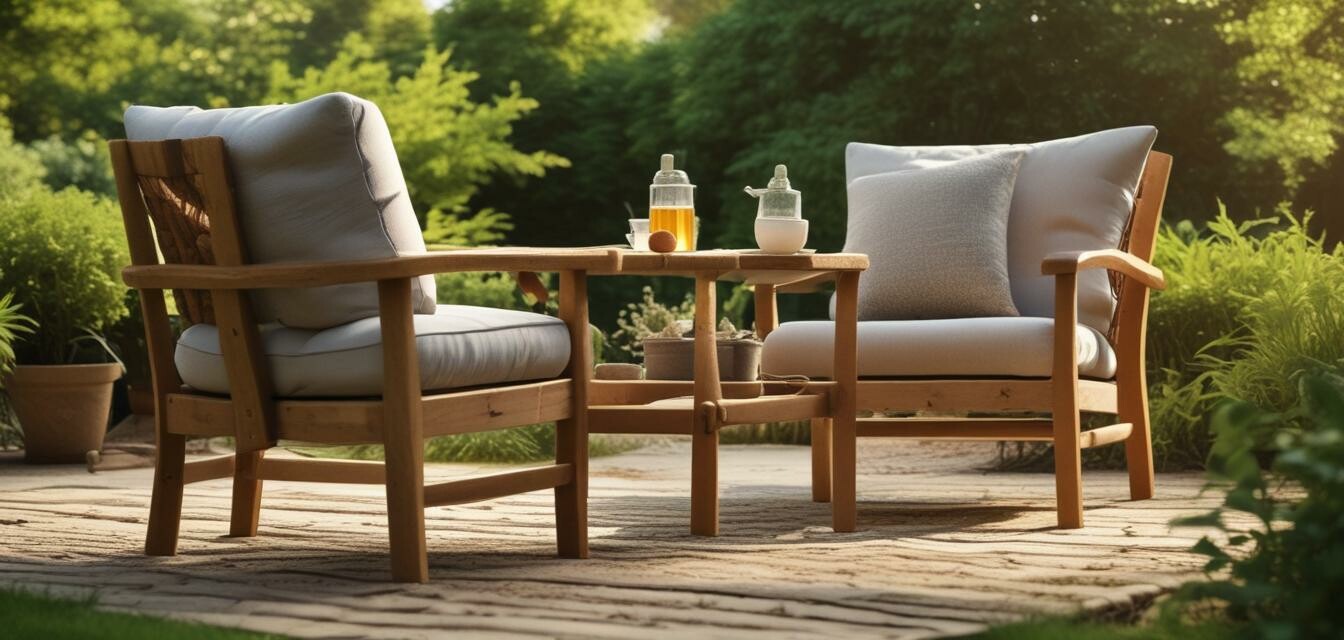
Building your own garden furniture from reclaimed wood
Key Takeaways
- Reclaimed wood is an eco-friendly option for garden furniture.
- Creating your own furniture allows for customization and creativity.
- Proper preparation and finishing can extend the life of your garden furniture.
- Incorporating sustainable practices promotes a healthier planet.
As we increasingly look to create beautiful outdoor spaces, choosing sustainable materials is essential. Building your own garden furniture from reclaimed wood not only promotes sustainability but also allows you to express your creativity. This guide will walk you through each step of the process, ensuring you create stunning pieces that enhance your garden.
Why choose reclaimed wood?
Reclaimed wood is sourced from old buildings, furniture, or other structures that are no longer in use. Opting for this material comes with several advantages:
- Environmental benefits: Reduces the demand for new timber and helps minimize deforestation.
- Unique character: Each piece of reclaimed wood has its own story, giving your furniture a distinct look.
- Durability: Older wood is often denser and more stable than new wood, making it highly durable.
Materials and tools you will need
Before you start your project, gather the following materials and tools:
| Materials | Tools |
|---|---|
| Reclaimed wood | Measuring tape |
| Screws and nails | Power drill |
| Wood glue | Saw (hand or power) |
| Sandpaper | Screwdriver |
| Wood finish (eco-friendly) | Clamps |
Step-by-step guide to building garden furniture
Step 1: Designing your furniture
Start by sketching your design on paper. Consider the type of furniture you'd like to create, such as a bench, table, or chairs. Draw a simple plan showing dimensions and assembly details.
Step 2: Sourcing your reclaimed wood
Look for reputable suppliers or local businesses specializing in reclaimed wood. Remember to check for quality and any signs of damage or pests. If you're feeling adventurous, you might even source wood from salvaged items around your home.
Step 3: Preparing the wood
Once you've obtained your wood, the preparation process is crucial. Follow these steps:
- Remove any nails or staples from the pieces.
- Sand the surfaces to eliminate rough edges and splinters.
- Clean the wood thoroughly to remove dirt and dust.
Step 4: Assembling your furniture
Using your design as a guide, begin assembling your furniture by:
- Cutting the wood to the necessary lengths.
- Joining the pieces using wood glue, screws, or nails.
- Assembling each section before attaching them together for stability.
Step 5: Finishing touches
To protect your furniture from the elements, apply an eco-friendly finish. A few options include:
- Natural oils, such as linseed or tung oil.
- Beeswax, for a more natural and non-toxic finish.
- Eco-friendly wood stains that enhance the grain without harmful chemicals.
Maintaining your reclaimed wood furniture
To ensure your garden furniture lasts, consider these maintenance tips:
- Clean furniture regularly using a soft damp cloth to remove dirt and debris.
- Reapply the finish every couple of years to maintain protection.
- Store furniture indoors or cover it during extreme weather conditions to prolong its life.
Final thoughts
Building your own garden furniture from reclaimed wood is a rewarding project that combines creativity with sustainable practices. Not only will you enjoy beautiful pieces of furniture, but you'll also play a crucial role in promoting eco-friendliness. If you're interested in further exploring sustainable practices, check out our Sustainable Practices blog category for more tips.
Pros
- Eco-friendly material choice.
- Unique and customizable designs.
- Durable and long-lasting furniture.
Cons
- Time-consuming process.
- Requires some carpentry skills.
- Sourcing quality reclaimed wood can be challenging.
Embrace sustainable woodworking and enjoy the satisfaction of creating your own garden hideaway with reclaimed wood.